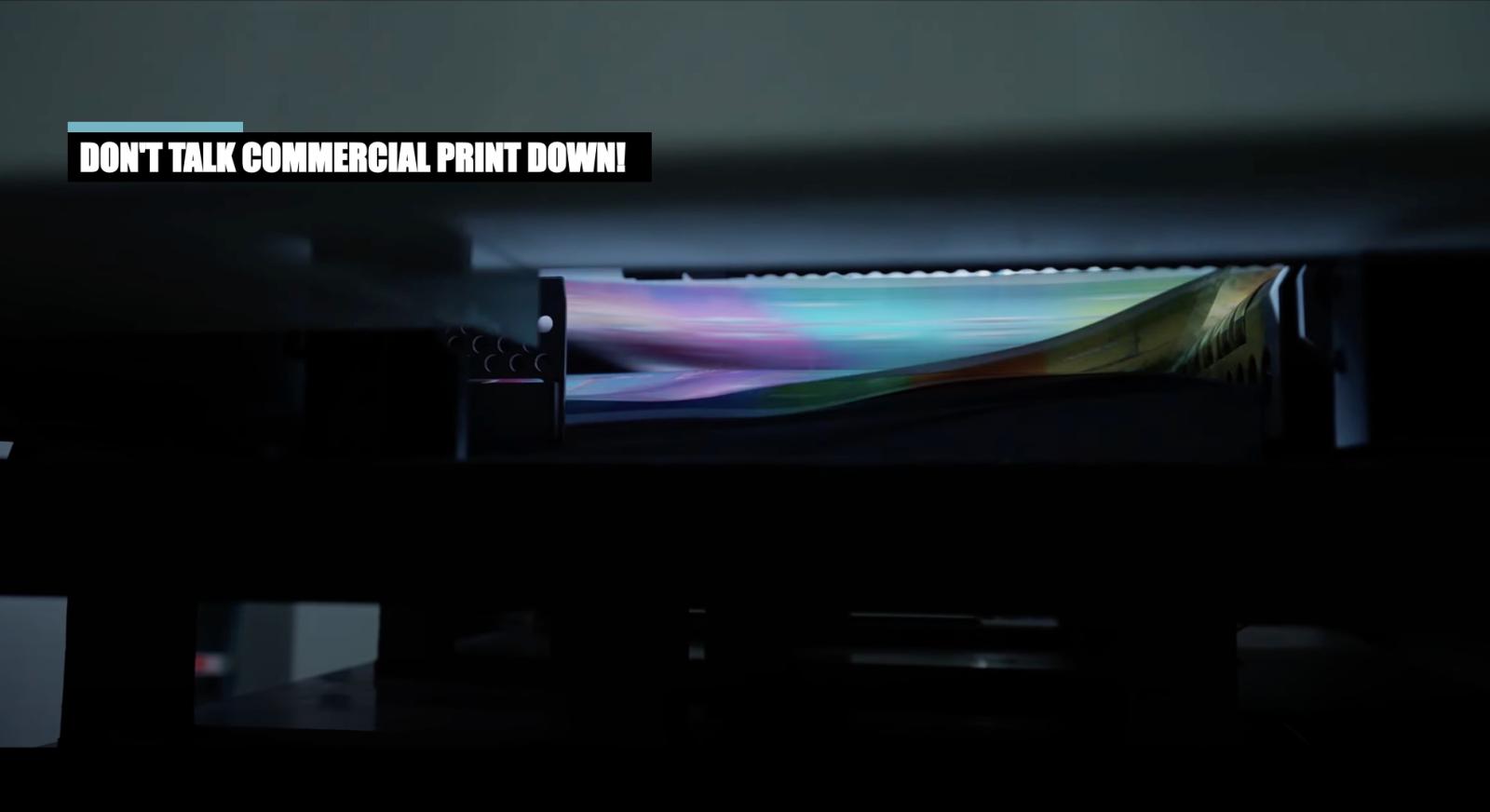In a few days, we will publish a film about an American printing company that recently invested in a new 8-color RMGT perfection offset press. Why would any invest in an offset press if the market is declining? Well, first of all, this particular company sees nothing but growth. Secondly, I question whether the Commercial segment has reduced as much as we tell each other, so let's look at why I believe so - and discuss whether I am right or wrong!
By Editor Morten B. Reitoft
Industry segments are often defined by the type of products, customers, and technology used - and the Commercial print segment has long been hyped to be a declining market. It's a fact that products like phone books, encyclopedias, newspapers, and magazines have decreased in volume. You can also argue that many other products, like brochures, leaflets, collaterals, etc., have reduced. Still, it's also a fact that online printing companies with gang-printing capabilities or low prices and easy ordering have opened a business for customers that would never even consider buying print in the past, so on what measures are we talking about a declining industry?
The federations will measure this on head counts, as a percentage of the salaries often compensates them. With labor challenges, PSPs will look for more productive technology - meaning more automated, fewer people involved, which will lead to lower general salaries and, therefore, lower payments to federations.
You can also talk about OEMs. Do they see a decreased revenue, and eventually, why? Well, The machines are getting faster and faster - both in setup time and print speed. They even use this as a KPI when selling new machines. If machines get smarter, faster, and produce more in a market that nobody anticipates growing, the result must be fewer machines and, therefore, a declining market. So yet, the printing companies who invest in the newest and latest will be able to produce more for less. Fewer machines, fewer employees, better products, and overcapacity in the market put significant pressure on prices.
But where offset OEMs may see a declining market, digital OEMs see a growing market. So who is right? Both can't be true or can they?
The crisis in the Commercial space isn't so much about a declining market but more about a changing market. With changes in order volumes, turn around time. Customers are becoming more diverse, and the challenge in the Commercial space isn't because of a decline but more about how to be profitable in a changing market.
If anybody talks about a declining commercial segment, you can start looking at the price development. Back in 1992, I published a music magazine. It was printed on 130gsm gloss paper in 1+1, and as far as I remember, the print run was about 4,500 copies monthly. The price for printing this magazine was MORE than twice that of today in full color. Therefore if you measure the Commercial space as declining, you have to consider whether the bigger question is how much of the decline is based on lower revenue.
The more interesting matter today is not talking Commercial print down. The challenge is to put development in perspective. We need to talk about profits. The companies which today have developed great business models, and utilize technology to their best, are more profitable than ever. When I speak to printing companies that do great, the sky is the limit.
When I started in the industry in 2000, my company had an ad on the local yellow pages, and people called daily to place orders with us. We even got calls from corporates (big ones) that asked us to participate in bids- and tenders, and you know - we didn't do anything to get work. We were almost at full capacity, and my boss had the biggest badest Volvo you could get, two houses, 35 employees, and yes, he worked many hours to achieve what he got - but seriously, totally different times.
Today you will die a swift death if you don't do anything - and that's a significant change. We have not proven ourselves valuable to our customers. We chase shortcuts to success - like believing that print in our communication isn't essential while convincing our customers it is, or not even using electronic newsletters to keep us relevant to customers by promoting our products and services or by participating in events where you can learn about the next new technology leap, and maybe even consider to sell our business because it is too tiring to get to work every morning and work.
The result - everybody is talking a proud industry down instead of focusing on growth. A printed piece means a lot to the customers, so why not improve the experience? German printing companies (in particular) deliver their printed products in greyboard boxes that are so poor that the customer experience only can be bad. Why don't we make print an experience? I just ordered some printed books on behalf of a friend - my god, what a tedious process and though customer service was friendly, there was no help, no added value, though the customer would have been willingly paying for it.
We need to get back on track. So ladies and gentlemen. Commercial print isn't dead. It's changing, and if we do it right, it will be way more profitable than in the past - but it requires hard work and a belief in the future to OEMs considering dishing their printed brochures. Don't. Make the brochures exciting. Show the world that you believe in our industry's ability to tell customers great stories. We should convince customers and brands to use print in their future communication! Everyday!



Fri October 15th
Abundância de provas...
O Que Os Papéis Dizem-Semana de 11 de outubro-Por Nessan Cleary
Fri October 8th
A Austrália ainda es...
O Que Os Papéis Dizem-Semana de 4 de outubro-Por Nessan Cleary
Fri October 1st
A cobertura desta se...
O Que Os Papéis Dizem-Semana de 27 de setembro-Por Nessan Cleary
Fri September 24th
Mais sinais de cresc...
O Que Os Papéis Dizem-Semana de 20 de setembro-Por Nessan Cleary
Tue September 21st
A experiência de imp...
INKISH cobre o evento, e mal pode esperar para conhecer a indústria é este talvez primeiro evento físico na Europa:-)
Fri September 17th
Há boas notícias sob...
O Que Os Papéis Dizem-Semana de 13 de setembro-Por Nessan Cleary
Sat September 11th
Perguntas sobre o es...
O Que Os Papéis Dizem-Semana de 6 de setembro-Por Nessan Cleary
Fri September 3rd
Estas semanas histór...
O Que Os Papéis Dizem-Semana de 30 de agosto-Por Nessan Cleary
Fri August 27th
Pesquisadores encont...
O Que Os Papéis Dizem-Semana de 23 de agosto-Por Nessan Cleary
Wed August 25th
Você nunca vai inves...
O que faz PSPs relutar em investir?
Assine
Receba Notificações para se inscrever em nosso informativo
Login (login)
Novo Usuário (novo_usuário)? Registre-se (registre)
Apague Senha (apague_senha)
Registre-se (registre)
Usuário Existente (existente_usuário)? Login aqui (login_aqui)
Login aqui (login_aqui)
Apague Senha (apague_senha)
Por favor entre seu endereço de email registrado Você receberá um link para resetar a sua senha via email (rest_senha_descrição)
Novo Usuário (novo_usuário)? Registre-se (registre)